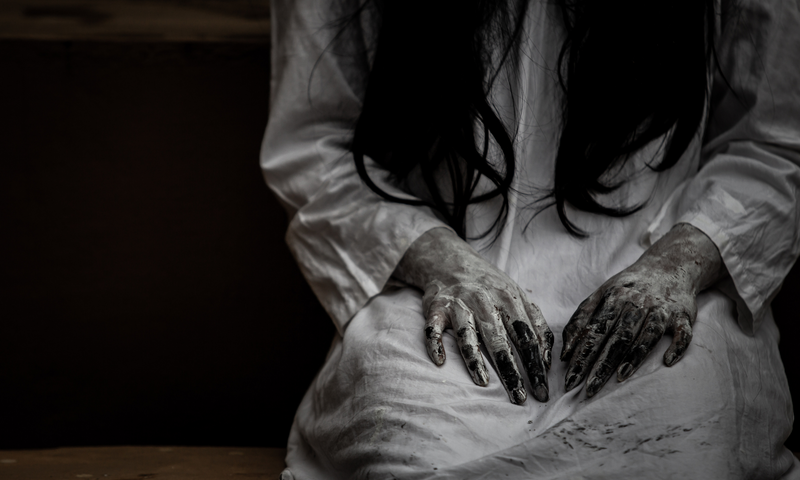Something is happening in Latin America with horror literature. In recent years, the names of young women authors who have turned their works into best-sellers have begun to become known internationally. We’re talking about the nuevo gótico latinoamericano or New Latin American Gothic, a literary phenomenon that we could classify as a subgenre of terror.
But what exactly is the genre, and why can’t the public and critics seem to be able to take their eyes off it? Why do we highly recommend you read these women to better understand some political, social, and cultural processes in Latin America? Let’s take a stab at and find out!!
What is the New Latin American Gothic?
The nuevo gótico latinoamericano or New Latin American Gothic is a way of calling a subgenre of terror in literature. Among its characteristics, we find the representation of classic horror topics, such as witchcraft or ghosts, anchored in contemporary times and in some regions of Latin America, such as the Andes, the vibrant South American capitals, or the Caribbean.
For example, in “La Mucama de Omicunlé”, by Rita Indiana, we can immerse ourselves in the Cuban sea and learn about the Caribbean mythology. In “Distancia de Rescate”, Samanta Schweblin shows us a typical Argentine countryside, with its cows depopulated hectares and also its dark legends. Fernanda Melchor is the author of the successful “Temporada de Huracanes”, where she usually sets her stories in Veracruz, Mexico.
In the New Latin American Gothic stories and novels we will find many references to Latin American cultures. We can read about Latin American political processes (as in “Nuestra Parte de Noche”, by Mariana Enríquez, which is set in the Argentine military dictatorship of the 1970s), or about gender conflicts, as in “Temporada de Huracanes”, where we will find situations of abuse.
All this is what makes the New Latin American Gothic such a special and interesting horror genre, especially if you are interested in learning about historical and cultural aspects of the Latin American region while enjoying a terrifying novel.
Authors who are killing it in the Latin American horror
This is a list with other authors of this genre that you should be dying to read:
- Mariana Enríquez. Enríquez is perhaps one of the most important authors of contemporary Latin American terror. She has published books such as “Las Cosas que Perdimos en el Fuego” or “Nuestra Parte de Noche” (we’ll talk about this novel later in this article!).
- Monica Ojeda. Ecuadorian, Ojeda is considered one of the most important contemporary novelists in Latin American literature. Her novel “Las Voladoras” is full of supernatural elements.
- Natalia Garcia Freire. She is also Ecuadorian and her first novel, “Nuestra Piel Muerta”, was chosen by The New York Times as one of the best books in Spanish of 2019.
- Fernanda Melchor. This Mexican author has become a success thanks to her novel “Temporada de Huracanes”. Netflix has confirmed an adaptation of her book.
- Samanta Schweblin. She has been translated into more than twenty languages. Schweblin is from Argentina and currently lives in Berlin.
- Giovanna Rivero. This Bolivian author is known for her book of stories “Tierra Fresca de su Tumba”, which touches on topics such as cannibalism or indigenous sorcery.
- Michelle Roche Rodriguez. This Venezuelan author is best known for “Malasangre”, a vampire story set during the Venezuelan dictatorship at the beginning of the 20th century.
- Fernanda García Lao. She’s from Argentina, and her first novel was “Muerta de Hambre” (“Starving to death”) where she questions society’s perceptions of female beauty. In her novel Sulfuro, García Lao tells the story of a woman who moves in across from a cemetery.
Three Latin American Horror Novels Written by Women you Must Read
As we have seen, there are many young Latin American authors who have become great writers of this genre. They come from many countries, and in each of these writers’ works, we can find elements of the idiosyncrasies of their peoples.
But how about we explore some of these authors a little more in depth? We have chosen three authors and books:
1 - Fernanda Melchor: “Hurricane Season”
Fernanda Melchor was born in Mexico in 1982 (like many of the authors in this genre, she’s a millennial!). The novel that definitely catapulted her to fame is “Hurricane Season” (“Temporada de Huracanes”), with which she was a finalist for the important 2020 International Booker Prize.
“Hurricane Season” begins by narrating how a group of children accidentally find the dead body of a witch in a canal, in a small (fictitious) town called La Matosa. The idea for the novel arose from a real case, when Melchor read a story in the newspaper about the discovery of the body of a woman accused of witchcraft in Veracruz, Mexico.
In “Hurricane Season”, the author explores topics such as machismo and poverty in Mexico. You can also read about topics such as abortion, homophobia, abuse, drug addiction, and much more. The book was simply a success. The New York Times described it in 2020 as one of the best books of the year. Find it here.
2 - Mariana Enríquez: “Nuestra Parte de Noche”
From Mexico we traveled to the south of the continent to Argentina. It is the home of Mariana Enriquez, who is one of the most prolific authors of the nuevo gótico latinoamericano. This young writer rose to fame with “Things We Lost in the Fire” (“Las Cosas que Perdimos en el Fuego”) in 2016. Although, no one doubts one of her most internationally recognized works is “Our Share of Night” (“Nuestra Parte de Noche”), with which she won one of the most important prizes in the Spanish-speaking literary world, the Herralde Novel Prize.
“Our Share of Night” has all the elements of a good horror novel including witchcraft, satanic cults and human sacrifices! It takes place in Buenos Aires in 1981 during the midst of the bloody military dictatorship that made civilians disappear and be murdered daily. In this context, Juan and his son Gaspar go on a road trip to the imposing Iguazú Falls in the northeast of the country and meet with the secret congregation Order.
Find it here in English.
https://www.instagram.com/p/Copt_NavZLZ/?hl=es
3 - Samanta Schweblin: “Fever Dream”
We continue in Argentina, and it’s the turn with Samanta Schweblin who was born in the city of Córdoba and became known by her book “Fever Dream” (“Distancia de Rescate”). You may recognize the name because Netflix recently adapted the novel into a movie that made it to “most viewed” on the platform in Argentina, the United States and several other countries.
https://www.instagram.com/p/CS4irN4o1IK/?hl=es
“Fever Dream” mixes terror, fantasy and suspense. The plot follows Amanda, a woman living her last days in a hospital bed, while she starts to remember the disturbing events that separated her from her daughter. The original book title in Spanish, “Distancia de Rescate” (Distance in the Rescue) refers to the space that separates a woman and her children to be able to react if something happened to them.
Another important book by Schweblin is “Seven Empty Houses” (“Siete Casas Vacías”), an anthology of short stories.
“I have a fascination with the strange and the sinister. “Seven Empty Houses” is a realistic book, but the abnormal continues to have a very strong presence,” Schewlin said in an interview on a local TV channel.
In 2017, the book was translated into English by Megan McDowell (same translator as “Our Share of Night”, by Enriquez), and this translation was among the six novels nominated for the prestigious International Booker Prize.
A genre similar to realismo mágico?
There are those who say that the New Latin American Gothic is a new trend that includes various elements of realismo mágico or magical realism a literary movement born in Latin America in the last century and popularized by the Colombian author Gabriel García Márquez. One of the main characteristics of realismo mágico is the narration of absolutely crazy situations as if they were everyday situations. Magical realism shows the strange and whimsical as something common and mundane.
However, in the New Latin American Gothic, we find new elements that make this genre unique, such as the mixture of classic horror elements to create plots anchored in contemporary Latin American culture.
There’s no doubt these young Latin American women are paving the way for an exciting literary genre that will leave people intrigued.






